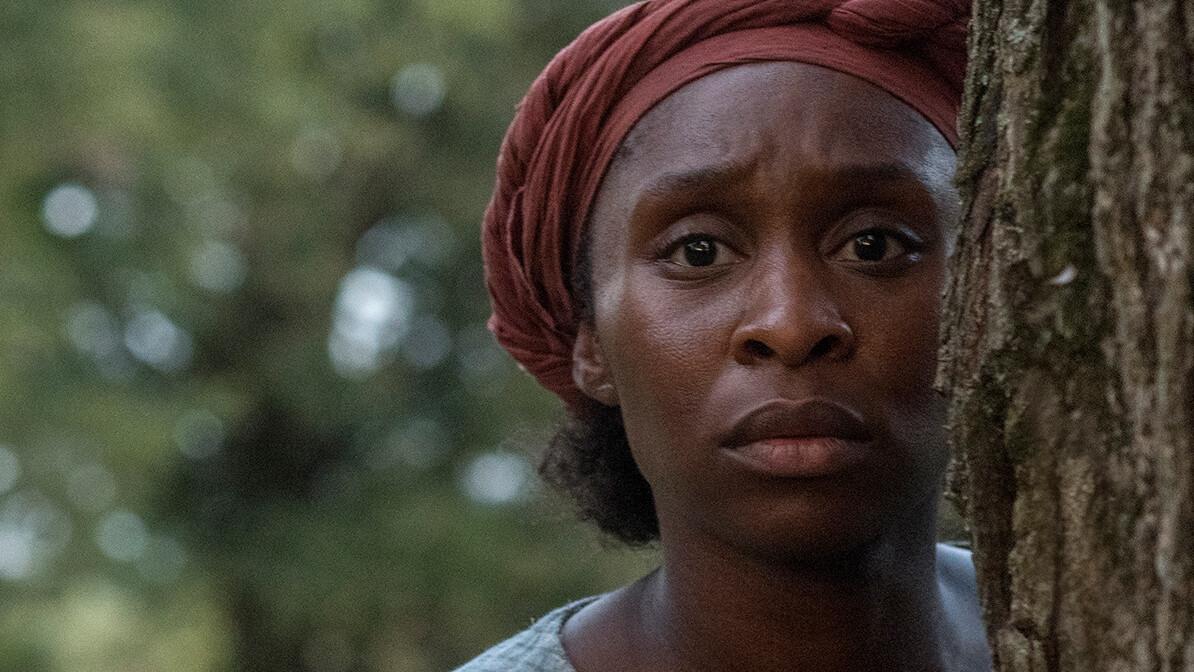- Home
- Entertainment
- Silas at the Met

Silas at the Met
What does classical ballet have to do with sharing the gospel? Can men and women who make a living by leaping across a theater stage in tights and tutus embody the truth of God’s Good News?
Silas Farley says, “Yes!” He’s a former New York City Ballet (NYCB) dancer who knew of his gifting at a very young age. “I was fluent—loved that feeling. Loved to move to the music and move people. I could speak with my body,” Farley said. Because of his childhood experience watching his siblings in liturgical dance, his faith informs his passion. “For me, dance was worship before it was performance.”
Early in Farley’s training, instructors recognized his talent for teaching and choreography. Then, in the midst of his career with NYCB, Farley received a carte blanche commission from MetLiveArts to choreograph a ballet for performance at The Metropolitan Museum of Art.
Farley wandered The Met more like a friend than a guest. He loves history, so names like Ashurnasirpal trip off his tongue as he sought inspiration for his ballet. Standing in a dusky space meant to resemble an entryway into the Assyrian Palace of biblical King Ashurnasirpal, Farley recalled an ancient account from Psalm 137. God’s chosen people, held in Babylonian captivity, hang up their harps on the willows by a river, and ask how they could possibly sing the Lord’s song in a foreign land.
The towering bi-racial dancer surmises enslaved people in 17th and 18th-century America may have asked the same question as the captive Israelites while singing their own spiritual laments. Psalm 137 forms the keystone of the ballet, says Farley.
From that idea of “creativity in captivity” MetLiveArts director Limor Tomer suggested collaboration with contemporary captives. She knows of an extraordinary podcast out of California’s San Quentin State Prison. Asking incarcerated musicians to write new spirituals struck a chord with Farley and Ms. Tomer.
Silas and his wife Cassia, along with Tomer, visited San Quentin to meet with Earlonne Woods and Bay Area artist-volunteer Nigel Poor, hosts of “Ear Hustle.” The East Coast visitors learned “ear hustle” is prison slang for “eavesdropping.” More lessons were to come. “We went knowing we had something to offer the prisoners, but learned they had so much more to offer us because of their depth of love for Christ and for each other,” said Silas.
Thirty musicians presented their compositions in the prison media lab. “It was such an encouraging time for us,” said Silas. “Most who shared music also shared their Christian testimony. That was unexpected. Almost all the pieces had something to do with how they met Christ. Their music was confessional, revelatory, worshipful, vulnerable. Men were crying out to God in these original spirituals—just like in the Psalms. They told how God was drawing them to Himself and they articulated spiritual freedom in Christ.”
Silas explained that the men experienced intense, racially stratified life in prison. “But with the guys who are Christians, in the context of making art together, that division is undone.” The remembered emotion got caught in Farley’s voice. “We saw through their artwork, and through the Holy Spirit’s work, a technicolor brotherhood formed in the prison,” he said. “Cassia and I went not knowing what to expect but came away with new spiritual brothers.”
At the close of their time together, a spontaneous invitation from one of the performers drew the visitors into a singalong. “We were singing ‘How Great Is Our God’ at the top of our voices, like Paul and Silas, and weeping. It was glorious!” said Silas. In that unexpected time and unlikely place, the dancers and the incarcerated artists joined hearts in worship of the One who made them free. Silas still marvels that twenty years ago, God called a 7-year-old boy—whose parents named him Silas—to help people experience freedom in Christ through worshipful art.
Eva Crawford, a visual artist and friend of the Farley family, heard Silas present his concept for “Songs from the Spirit” at an ArtsCharlotte gathering back in his North Carolina hometown. “The Met is my happy place,” said Crawford. “Silas’s vision to present the gospel through dance and original words and music compelled me. I knew I had to attend.”
“Beautiful things take time,” says Silas. “Songs from the Spirit” is three years in the making but comes together in a supernatural way. “The Holy Spirit Himself curated the piece,” said Silas. “I feel zero ownership. The collaborative artwork was unequivocally Christ-focused and Christ-exalting. It was multifaceted in its glory because Christ is multifaceted in His glory.”
In the spring of 2019, before Covid-19 closed museums and theaters, seven classical ballet dancers traded their tights and toe shoes for white-toned activewear and tennis shoes. The time had come for the live performance in three of The Met’s packed galleries. Headlines in a “New York Times” article dubbed Silas, Cassia, and the five other dancers “Seraphic Track Stars.”
The first segment, “Lamentation,” began in the shadowy court of the Assyrian king with the mournful sound of a harmonica and the slow-motion, fixed-gaze stroll of a solitary dancer—Silas Farley. The spoken words and songs expressed raw regret for commandment-breaking, for seeking love in the wrong places. The musicians acknowledged sin’s darkness, pleading to the Heavenly Father for forgiveness. “We were transported,” said Crawford.
Next, a processional, “Blinded by the Light,” dismissed darkness, ushering dancers and audience through the Great Hall Balcony to the Astor Chinese Court, a tranquil space offering rest and reflection. In this segment, “Contemplation,” a cappella renditions of “Deep River” and “Balm in Gilead” accompanied the dancers. Hope for wounded and sin-sick souls lifted its voice right there in the Metropolitan Museum of Art.
But there’s more. In the last segment, “Celebration,” Silas-the-choreographer led the dancer-storytellers out into the Charles Englehart Court where windows and a glass ceiling vanished in the light. They glided on rays of sunlight to John Newton’s 18th-century musical testimony, “Amazing Grace.” New rap vocals and a new spiritual song, “Thank You, Jesus,” added layers of praise and thanksgiving for God’s expansive work of transforming hearts. “I cried,” said Crawford. “The dances were joyful and infectious. There was rejoicing in heaven and on The Met floor. This was church in the truest sense.”
Even so, the gospel-centric artwork has a broad audience. “Since it wasn’t in a proscenium theatre but in the museum where the audience surrounded the artwork, there were as many perspectives as people, and because the music came from people on the margins, everyone felt welcome to come listen,” says Silas.
The release from San Quentin of some of the musicians coincided with the performance and they were present to witness the unveiled stories of their journeys from darkness to light. “For them to see their music highlighted, honored, and celebrated in such an exalted space was amazing, and so redemptive,” says Silas.
One woman in The Met galleries reported on Facebook about her reaction to the beauty and joy of the dance. “I was gripped and compelled to put down my phone,” she says. The ballet even attracted social media accolades from across several continents.
The Met’s 2020 digital re-release of “Songs from the Spirit” happened to coincide with the George Floyd protests, riots, and national soul-searching. Farley believes the timing was providential. Across the centuries, contemporary incarcerated musicians and enslaved composers of plantation songs joined voices, releasing a soothing balm. “In the ballet, we got to prefigure the ultimate trajectory of history — one great congregation of every tongue, tribe, and nation glorifying the Lamb,” said Farley. “That’s God’s design and whether they articulate it or not, it’s what everyone longs for.”
…
Photo credit: Rosalie O’Connor
Trending Now
Sign up today for your Inspiration Today Daily Newsletter
Supercharge your faith and ignite your spirit. Find hope in God’s word. Receive your Inspiration Today newsletter now!
Jo Grey
Jo Grey is a North Carolina freelance writer with several years of newspaper article credits about life in a rural county. She retired with her husband to a small French-built village and serves as editor-writer for the community's newsletter.
Related Articles
March 10, 2025
Finding Total Victory on the Road to Championship
I have been playing competitive golf for 55 years. Through the various stages of my life, my…
March 7, 2025
Average Joe Movie: SCOTUS, Praying Football Coach Backstory
When Coach Joe Kennedy knelt to pray at the 50-yard line after a high school football game, he had…
February 28, 2025
The Power of Story: A Muslim Journey to Hope
Storytelling is one of the oldest and most powerful ways to touch the human heart. Parents tell…
February 27, 2025
‘Harriet’ Movie: Courage, Freedom, Faith
Antebellum abolitionist Harriet Tubman had convictions and courage that helped free herself…
Next Steps To Strengthen Your Walk
Inspiration Today Newsletter
Supercharge your faith and ignite your spirit. Find hope in God’s word. Receive your Inspiration Today newsletter now!
Christian Articles
Find articles to strengthen your walk and grow your faith. We have a wide range of topics and authors for you.
Submit A Prayer Request
We are here for you. Simply click on the button below to reach us by form, email or phone. Together we will lift our hearts and voices with you in prayer.





